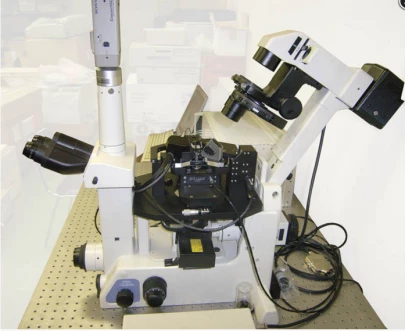CombiScope 1000 Scanning Probe Microscope
Description
The CombiScope 1000 Scanning Probe Microscope (SPM) is an advanced research instrument that provides the entry path for researchers in materials science, biology, spectroscopy and photonics. If you work with transparent samples either in air or in liquid towards nanoscale structures and near-field optical properties investigation, the CombiScope 1000 is the right solution for you. It perfectly combines inverted optical and atomic force microscopies and unleash all the power of both techniques providing the instrument adjustment and measurement automation, high resolution and integration flexibility only available from AIST-NT. Plus it can be easily upgraded to our turn-key OmegaScope AFM-Raman system.
CombiScope 1000 Scanning Probe Microscope
Specifications |
|
|---|---|
| Max Sample Size: | 25 mm |
| Min Working Distance: | 25 mm |
| Scan Range (X): | 100 um |
| Scan Range (Y): | 100 um |
| Scan Range (Z): | 20 um |
Features
Extraordinary productivity and easy operation
Top level scanner
1300 nm AFM laser
Solutions for working in liquid
All operating modes (including STM and SNOM) in one single instrument
Integration with Raman
For pricing, technical or any other questions please contact the supplier
- No registration required
- No markups, no fees
- Direct contact with supplier
-
Ships from:
-
Sold by:
-
On FindLight:
External Vendor

Claim AIST-NT Inc Page to edit and add data
Frequently Asked Questions
The CombiScope 1000 Scanning Probe Microscope is used for research in materials science, biology, spectroscopy, and photonics.
Yes, the CombiScope 1000 is designed to work with transparent samples either in air or in liquid.
The CombiScope 1000 offers all operating modes, including STM (Scanning Tunneling Microscopy) and SNOM (Scanning Near-field Optical Microscopy), in one single instrument.
Yes, the CombiScope 1000 has solutions for working in liquid, including a specially designed liquid cell with heating and liquid perfusion capabilities.
Yes, the CombiScope 1000 can be easily upgraded to the OmegaScope AFM-Raman system.
